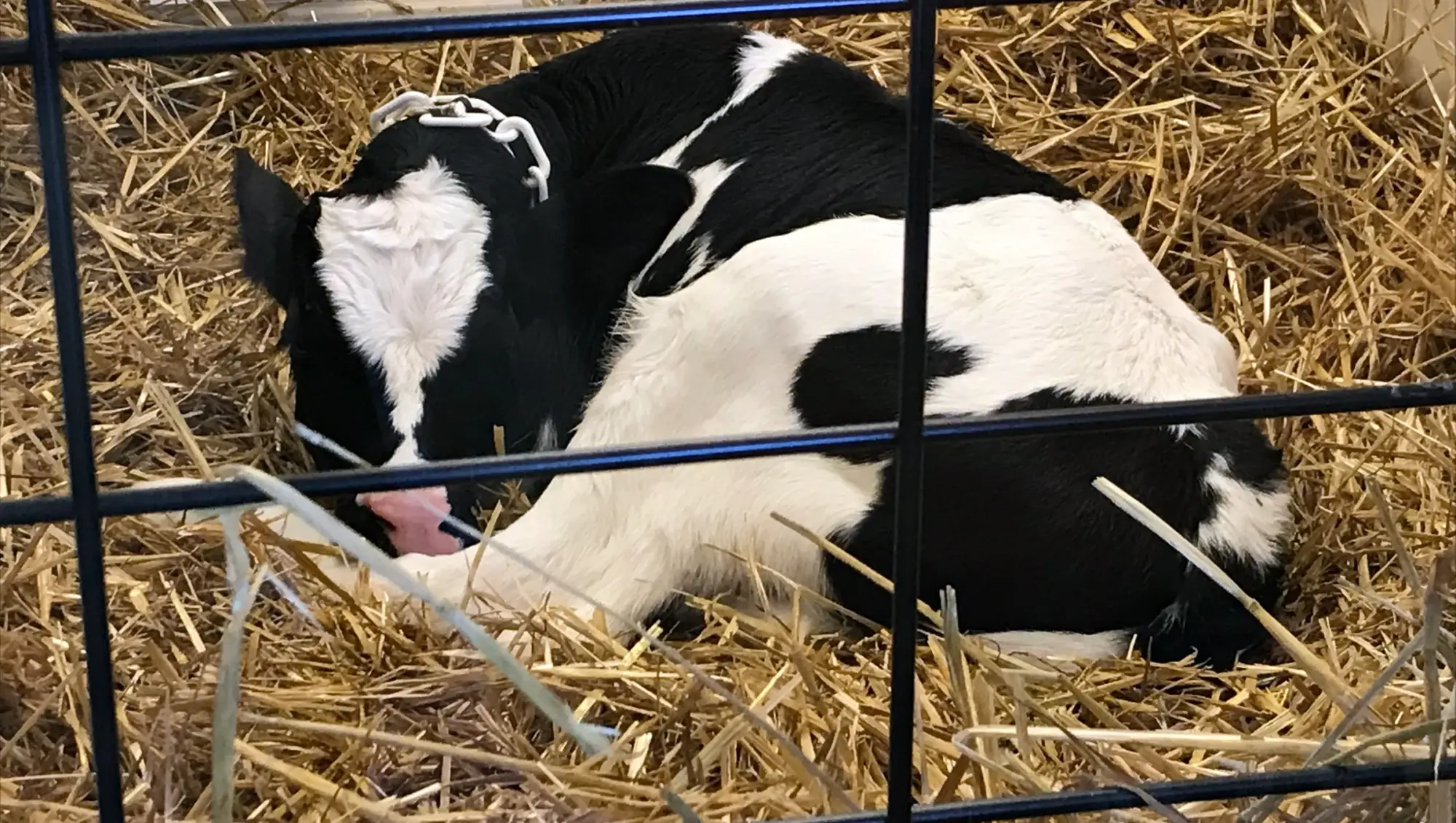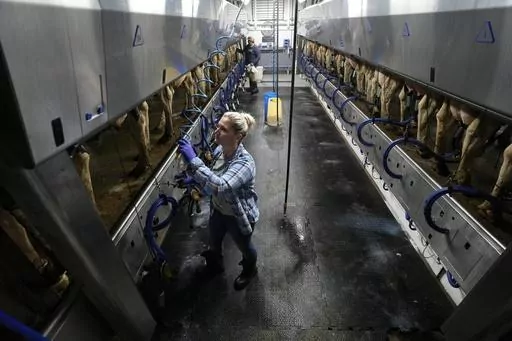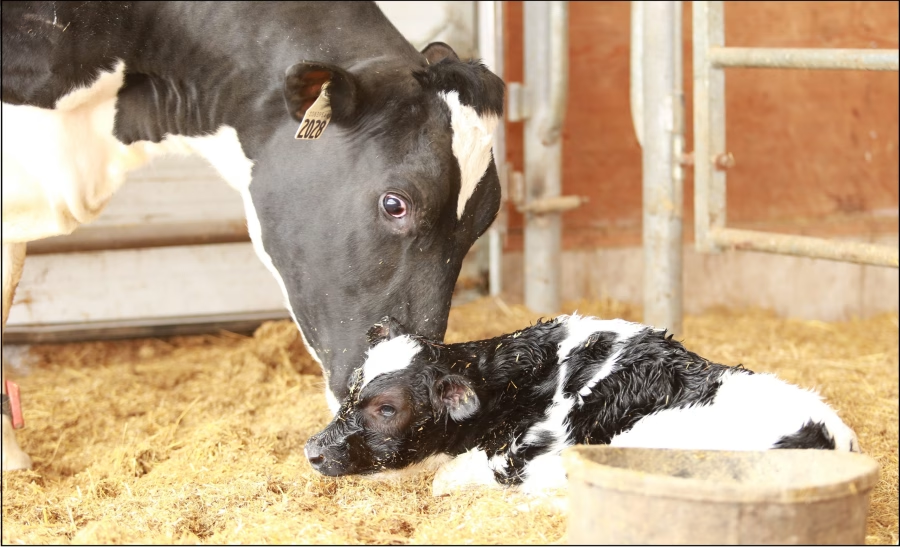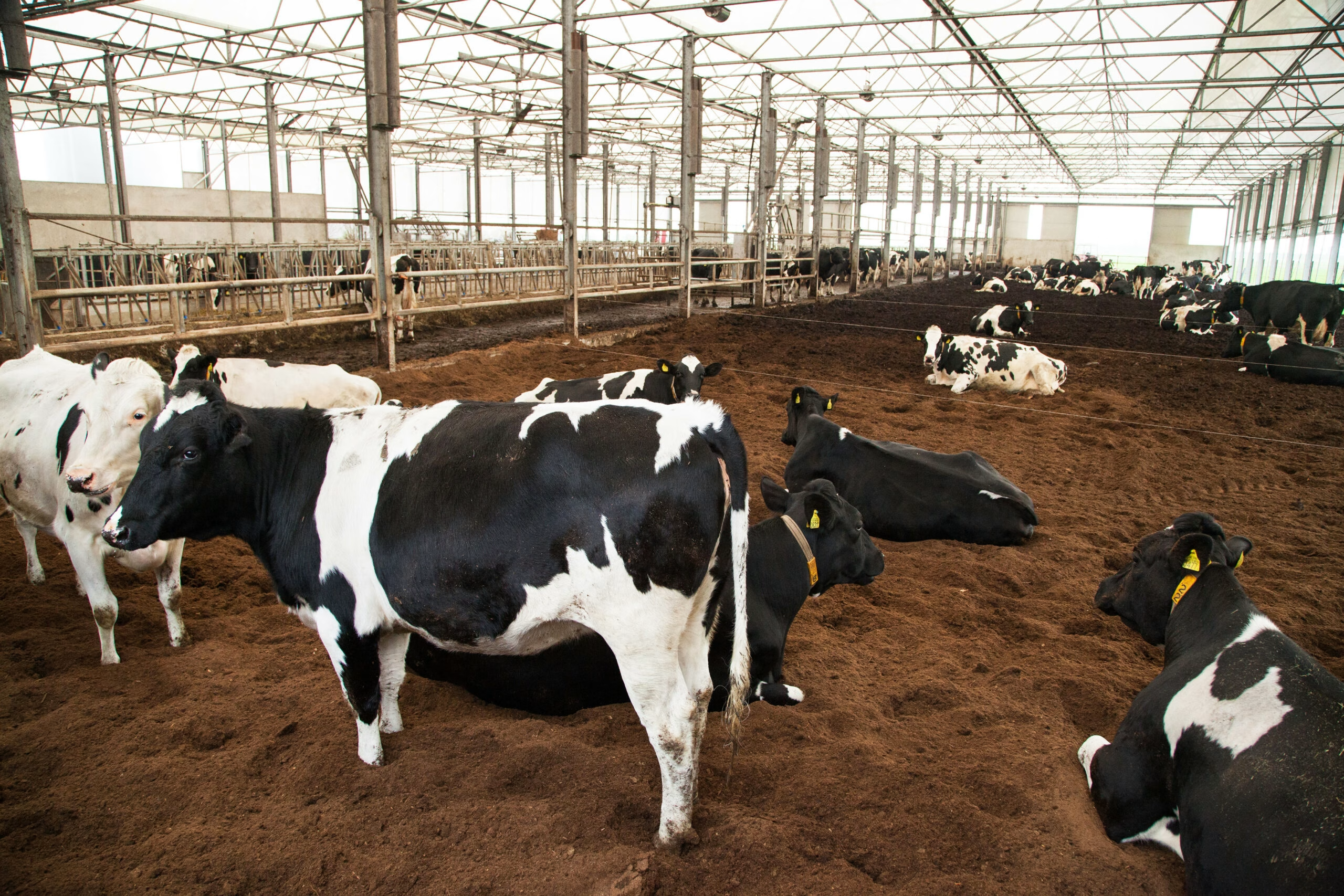State fairs now use fake cows for milking demos due to bird flu fears. Overreaction or necessity? Learn how this affects the dairy industry. Read more.
Summary: The bird flu has forced a surprising turn at state fairs this year. Instead of the beloved, live milking cows that have traditionally been a staple, fairgoers are now greeted by artificial, fiberglass counterparts. These measures stem from concerns about the highly pathogenic H5N1 virus spreading among dairy herds and potentially jumping to humans. Farmers now navigate stricter testing protocols while fair organizers scramble to find safe alternatives. This shift, deemed by some as overcautious, affects the dairy industry and the cultural fabric of these cherished events. Since March, over 190 dairy herds nationwide have been infected, and 13 farm workers tested positive after exposure to sick animals. Although the CDC deems H5N1 a minimal danger to the general public, they continue to urge caution in animal sections at fairs. As the debate continues, many wonder: Is this level of caution essential?
- Artificial cows replace live milking demonstrations at state fairs due to bird flu concerns.
- Farmers encounter stricter testing protocols to prevent the spread of H5N1 among dairy herds.
- Over 190 dairy herds and 13 farm workers nationwide have been affected by the virus since March.
- CDC considers H5N1 a minimal threat to the general public but advises caution in animal areas.
- This shift is seen by some as an overreaction, impacting both the dairy industry and state fair traditions.

Imagine walking through your favorite state fair, excited to see a live milking demonstration, only to come across a realistic fiberglass cow instead of the genuine thing. This year’s fairs have taken an odd turn, not by desire. The fear of avian flu has led to the replacement of traditional dairy cows with synthetic alternatives. As the H5N1 avian influenza virus continues to cause havoc, it has spread beyond poultry, endangering dairy cows and agricultural workers. This has severe consequences for dairy farmers and experts in our business. But in the face of this adversity, dairy professionals are showing remarkable resilience, negotiating new testing standards, dealing with logistical issues, and risking possible financial consequences while keeping their farms infection-free. This new reality emphasizes the significance of always being aware and prepared since the whole essence of our business may rely on it.
The Unexpected Shift: Bird Flu Makes Waves in Dairy Farms
Avian influenza, commonly known as bird flu, has historically been a concern for poultry farms. However, this year marks a significant shift as the H5N1 virus, for the first time, poses a threat to cow herds. Since March, over 190 dairy cows across the country have fallen ill, as reported by the USDA. Additionally, 13 farm workers tested positive for H5N1 after exposure to sick animals, although they all recovered [USDA]. This unprecedented shift underscores the severity of the situation.
Given this context, state fairs have to change swiftly. The decision to employ artificial cows in milking demonstrations was deemed essential to prevent the virus from spreading further. Real cows may represent a considerable danger to other animals and people. This proactive approach to public health, even if it means using artificial cows, should reassure the public about the safety of state fairs. “Normally, we’d have a real cow out there,” said Jill Nathe, the Minnesota State Fair’s deputy general manager of agriculture and competition. “We just can’t do that right now.”
Furthermore, the Centers for Disease Control and Prevention (CDC) still deems H5N1 a minimal danger to the general people. However, they continue to urge care in animal sections during fairs. Despite these instructions, numerous fairgoers were indifferent, demonstrating a disconnect between popular perception and government guidance. One visitor, O.E. Glieber, said, “I don’t believe it’s a significant concern. The CDC overreacts on a variety of issues.”
Using imitation cows such as Milkshake, Buttercup, and Olympia preserves people’s health and the integrity of state fairs. While some may see these preventive steps as overreactions, they are intended to protect direct participants and the larger agricultural community.
Adapting Traditions: The Avian Influenza Forces Radical Changes at State Fairs
The avian influenza epidemic has prompted state fairs nationwide to make substantial changes, notably in their popular dairy displays. The Michigan State Fair, for example, introduced two synthetic cows called Milkshake and Buttercup to enable guests to see milking demonstrations without the health hazards associated with real animals. Similarly, the Minnesota State Fair has used Olympia, another synthetic cow, as part of their adaption plan. These changes, while challenging, demonstrate the dedication of fair organizers to maintaining the integrity of state fairs.
The repercussions of these developments go beyond the visual and interactive experiences. Farmers and fair organizers confront complicated logistical obstacles and demand new testing requirements. Lactating calves in Wisconsin must test negative for H5N1 within seven days of arriving at the fairgrounds, creating a tight timeline for vets and farmers. Rick “RT” Thompson, a seasoned Wisconsin dairy farmer, highlighted the meticulous cooperation required to guarantee his calves matched the standards before competing at the fair.
The repercussions are severe. State fairs serve as a showcase for agricultural expertise and an essential link between urban and rural populations. However, with these new health rules in place, the traditional environment of these events is under threat, making it a challenging year for both participants and organizers. Michigan’s decision to restrict nursing cows until the state is avian flu-free for two months emphasizes the gravity of the problem. This decision has already resulted in a wasted chance for the 2024 state fair, impacting numerous dairy farmers who depend on these events for recognition and economic prospects.
As these modifications unfold, the dairy industry must traverse unknown territory, combining public health concerns with a genuine and instructive fair experience. The long-term effects of these initiatives have yet to be wholly appreciated. Nonetheless, they unmistakably signal a new age for state fairs and their vital position in America’s agricultural heartland.
Testing Troubles: Dairy Farmers Grapple with Burdensome Regulations Amid Bird Flu Threat
The new laws have taxed dairy producers, pushing them to rethink their routines and procedures. Rick “RT” Thompson, a veteran of Wisconsin’s state fairs, struggled to meet the strict testing deadline. “It’s not convenient,” he said, considering the additional procedures needed to make his herd fair-ready. To assure prompt compliance, his vet’s wife drove samples to a state lab in Madison. This extra degree of logistical complication is far from optimal for busy farmers with large farms.
Jennifer Droessler also expressed her dissatisfaction, deciding to leave a cow at home owing to the increased danger of avian flu. “We’ll aim for next year, and hopefully, it won’t be an issue,” she said, disappointed but optimistic. The sisters from Cuba City, Wisconsin, could still participate by displaying other animals. Still, the decision to ban a nursing cow exemplifies the difficult decisions farmers today face.
Strict testing procedures and health safeguards have hampered participation in popular state fairs and strained agricultural operations. Time, resources, and logistical efforts must now be redirected to fulfill these additional demands, resulting in a cascade effect that affects everyday farm operations. For many, this change is more than just an annoyance; it fundamentally alters their professional lives.
Is the Solution Worse than the Problem? Public Reactions to Fake Cows at State Fairs
The switch to employing artificial cows for milking demonstrations has elicited various emotions from state fair attendees. While safeguards are appropriate, do they give the public the incorrect impression about dairy farming?
Some guests seem unconcerned. For example, O.E. Glieber, an 88-year-old fairgoer from Delafield, Wisconsin, said, “I don’t believe it’s a significant danger. The CDC overreacts on a variety of issues.” This viewpoint reflects a pervasive mistrust of the preventive measures being implemented.
However, many attendees must be aware of the reasons for these adjustments. Many people continue to eat, drink, and interact with animals without thinking twice. The Centers for Disease Control and Prevention (CDC) in the United States warns against such behavior in fair animal zones. However, a large percentage of the population overlook this advice.
More information may positively impact public perception of dairy farming and state fairs. When safeguards are not understood, misunderstandings regarding dairy farming safety and procedures might arise. Are we sounding an unwarranted alarm or a well-founded warning? The public’s diverse replies indicate that this is a topic worth discussing.
As these fairs expand to address new issues, it is critical to keep the audience informed and trusting. People should realize that, although safety precautions are necessary, the fundamentals of dairy production remain solid and dependable.
The Bottom Line
State fairs are responding to the growing danger of avian flu by employing dummy cows for milking demonstrations and implementing strict testing standards on dairy farms. While human and animal safety is required, this response has created logistical issues and disturbed traditions beloved by urban and rural populations. The dairy business may face additional operational expenses and a shift in public opinion. As the dairy industry navigates these challenges, it’s worth considering whether the present safety standards balance traditional state fairs’ authenticity and educational value. Should we reconsider these safeguards to serve our heritage and future generations better? The solution is finding a medium ground that protects safety while preserving the character of these treasured events.
Learn more:
- Bird Flu Outbreak Prompts US Dairy Farmers to Implement Strict Measures, Including Visitor Bans and Tree Removal
- Therapeutic Cow Cuddling at Risk: The Hidden Threat of Avian Influenza Outbreaks
- US Set to Inspect Ground Beef Amid Bird Flu Outbreaks in Dairy Cows: Key Updates
 Join the Revolution!
Join the Revolution!
Bullvine Daily is your essential e-zine for staying ahead in the dairy industry. With over 30,000 subscribers, we bring you the week’s top news, helping you manage tasks efficiently. Stay informed about milk production, tech adoption, and more, so you can concentrate on your dairy operations.







 Join the Revolution!
Join the Revolution!









